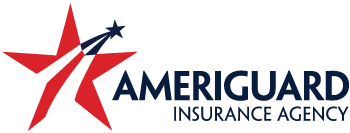Understanding Home Insurance Basics
Home insurance, also known as homeowners’ insurance, is designed to cover the cost of repairing or rebuilding your home and replacing its contents in the event of damage due to certain perils like fire, theft, and storm damage. While it provides a wide range of protection, it’s not an all-encompassing safety net.
Common Exclusions in Home Insurance Policies
Typically, home insurance policies exclude coverage for:
- Natural Disasters: Specifically, floods and earthquakes are not covered under standard policies.
- Maintenance Issues: This includes wear and tear, mold, and infestations from pests or rodents, highlighting the importance of regular home maintenance.
Why Certain Damages and Losses Aren’t Covered
Insurance companies manage risk and to ensure the sustainability of their offerings, they exclude events that are either too predictable, such as wear and tear, or carry catastrophic risk that requires specialized coverage, like floods or earthquakes.
Natural Disasters and Home Insurance
For risks like earthquakes and floods, homeowners are encouraged to purchase additional policies. In some states, like Florida for example, wind damage is covered on a separate policy from a homeowners insurance policy. These specialized policies offer protection tailored to the unique risks posed by these natural events.
Maintenance-Related Exclusions
The principle behind excluding maintenance issues is to encourage homeowners to maintain their properties diligently. Regular maintenance can prevent many of the exclusions, such as damage from leaks that could lead to mold growth.
Other Common Exclusions
High-value items, such as jewelry and art, often have coverage limits. Additionally, intentional damage caused by the homeowner or neglect is not covered. Expensive jewelry and art can be added to the home insurance policies with individual, scheduled endorsements.
Reading and Understanding Your Policy
It’s crucial to thoroughly review your home insurance policy and discuss any uncertainties with your insurance agent. Understanding your coverage limits and exclusions will help you make informed decisions about additional policies or endorsements you may need.
How to Cover What’s Not Included
Consider riders, endorsements, or additional policies to cover exclusions. For instance, adding a flood insurance policy if you’re in a high-risk area or scheduling personal property to cover high-value items.
FAQs on Home Insurance Coverage
- How do I know if my area is at risk for floods or earthquakes? Check with local government resources or your insurance agent for risk assessments.
- Can I get coverage for mold damage? Mold damage might be covered if it’s a result of a covered peril, such as water damage from a burst pipe, but not from neglected maintenance issues.
- What should I do if my high-value items exceed my policy’s limits? Consider purchasing a scheduled personal property endorsement to increase coverage on specific high-value items.
- Is there any way to get coverage for wear and tear? While standard policies don’t cover wear and tear, regularly reviewing and updating your coverage can help ensure your policy meets your needs.
- How often should I review my home insurance policy? Annually, or after significant changes to your home or its contents, to ensure your coverage is adequate.
Conclusion
While home insurance provides a vital layer of protection for your property, it’s important to be aware of its limitations. By understanding what is not covered by your home insurance, you can take steps to secure additional coverage and ensure that you’re fully protected against potential risks. Always stay informed and consult with your insurance agent to tailor a policy that best suits your needs.
